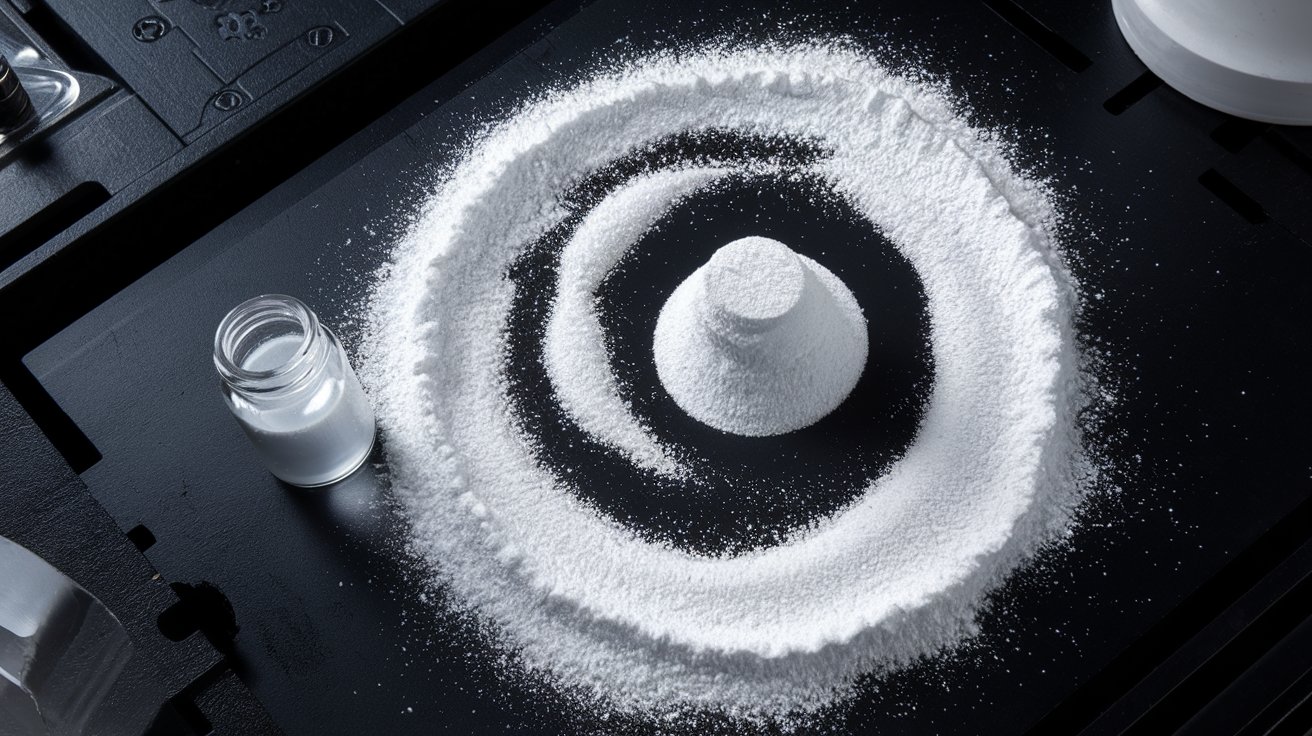
Americium(II) chloride might not be a household name, but this intriguing compound has some fascinating aspects worth knowing. Americium, a synthetic element, was first discovered during World War II as part of the Manhattan Project. Americium(II) chloride is one of its many compounds, notable for its unique properties and applications. From its role in smoke detectors to its use in scientific research, this compound has a variety of uses. Ever wondered why your smoke detector works so efficiently? It’s partly thanks to americium! This compound also plays a role in nuclear science, helping researchers understand more about radioactive elements. Ready to dive into some cool facts about americium(II) chloride? Let’s get started!
Key Takeaways:
- Americium(II) Chloride is a rare and radioactive compound with unique properties. It's used in smoke detectors, scientific research, and nuclear science, but requires strict safety measures for handling and disposal.
- Americium(II) Chloride, discovered in 1944, has contributed to advancements in nuclear chemistry. It's part of the actinide series and can be used to create other compounds, but its radioactive nature requires careful handling.
What is Americium(II) Chloride?
Americium(II) chloride is a chemical compound with the formula AmCl2. It consists of americium and chlorine, and it’s one of the many compounds formed by americium, a synthetic element. Here are some fascinating facts about this intriguing substance.
-
Americium(II) chloride is a rare compound because americium itself is not found naturally on Earth.
-
This compound is typically produced in a laboratory setting through complex chemical reactions.
-
Americium, the element in AmCl2, was discovered in 1944 by Glenn T. Seaborg and his team.
-
The compound has a crystalline structure, which is common among many chloride salts.
-
Americium(II) chloride is usually white or light-colored, similar to other chloride salts.
Uses of Americium(II) Chloride
Despite being rare and synthetic, americium(II) chloride has some interesting applications.
-
One of the primary uses of americium is in smoke detectors, though not specifically in the form of AmCl2.
-
Americium(II) chloride can be used in scientific research to study the properties of actinides.
-
It helps in understanding the behavior of radioactive materials, which is crucial for nuclear science.
-
The compound can be used in the production of neutron sources.
-
Americium compounds, including AmCl2, are sometimes used in radiography to inspect materials for structural integrity.
Chemical Properties of Americium(II) Chloride
Understanding the chemical properties of AmCl2 can give insights into its behavior and reactivity.
-
Americium(II) chloride is highly reactive with water, forming americium hydroxide and hydrochloric acid.
-
The compound is soluble in water, which is typical for many chloride salts.
-
It has a melting point of around 715°C (1,319°F).
-
Americium(II) chloride can react with oxygen to form americium oxides.
-
The compound can also react with other halogens to form different americium halides.
Safety and Handling of Americium(II) Chloride
Handling americium(II) chloride requires strict safety protocols due to its radioactive nature.
-
Americium(II) chloride is radioactive, posing significant health risks if not handled properly.
-
Proper protective equipment, such as gloves and lab coats, is essential when working with AmCl2.
-
The compound must be stored in specialized containers to prevent radiation exposure.
-
Laboratories handling americium compounds need to follow strict regulatory guidelines.
-
Disposal of americium(II) chloride requires careful planning to avoid environmental contamination.
Interesting Facts about Americium(II) Chloride
Here are some more intriguing tidbits about this unique compound.
-
Americium is named after the Americas, reflecting its discovery in the United States.
-
The element americium is part of the actinide series on the periodic table.
-
Americium(II) chloride is less commonly studied compared to other americium compounds.
-
The compound’s radioactivity can be detected using Geiger counters.
-
Americium(II) chloride can be used to create other americium compounds through various chemical reactions.
Historical Context of Americium(II) Chloride
The history behind americium and its compounds is quite fascinating.
-
Americium was first isolated during the Manhattan Project, which developed the first nuclear weapons.
-
The discovery of americium expanded the understanding of transuranic elements.
-
Americium(II) chloride was synthesized as part of efforts to explore the chemistry of newly discovered elements.
-
The study of americium compounds has contributed to advancements in nuclear chemistry and technology.
-
Research on americium(II) chloride continues to provide valuable insights into the behavior of radioactive materials.
The Fascinating World of Americium(II) Chloride
Americium(II) chloride, a compound with unique properties, has captivated scientists and researchers alike. Its role in smoke detectors, nuclear reactors, and scientific research highlights its versatility and importance. Despite being a synthetic element, americium's applications extend far beyond what one might expect. From its discovery in the mid-20th century to its current uses, this compound continues to be a subject of interest and study.
Understanding the facts about americium(II) chloride not only broadens our knowledge of chemistry but also underscores the significance of synthetic elements in modern technology. Whether you're a student, a science enthusiast, or just curious, the journey through the world of americium(II) chloride offers a glimpse into the intricate and fascinating nature of chemical compounds. Keep exploring, and who knows what other intriguing facts you'll uncover next!
Frequently Asked Questions
Was this page helpful?
Our commitment to delivering trustworthy and engaging content is at the heart of what we do. Each fact on our site is contributed by real users like you, bringing a wealth of diverse insights and information. To ensure the highest standards of accuracy and reliability, our dedicated editors meticulously review each submission. This process guarantees that the facts we share are not only fascinating but also credible. Trust in our commitment to quality and authenticity as you explore and learn with us.
